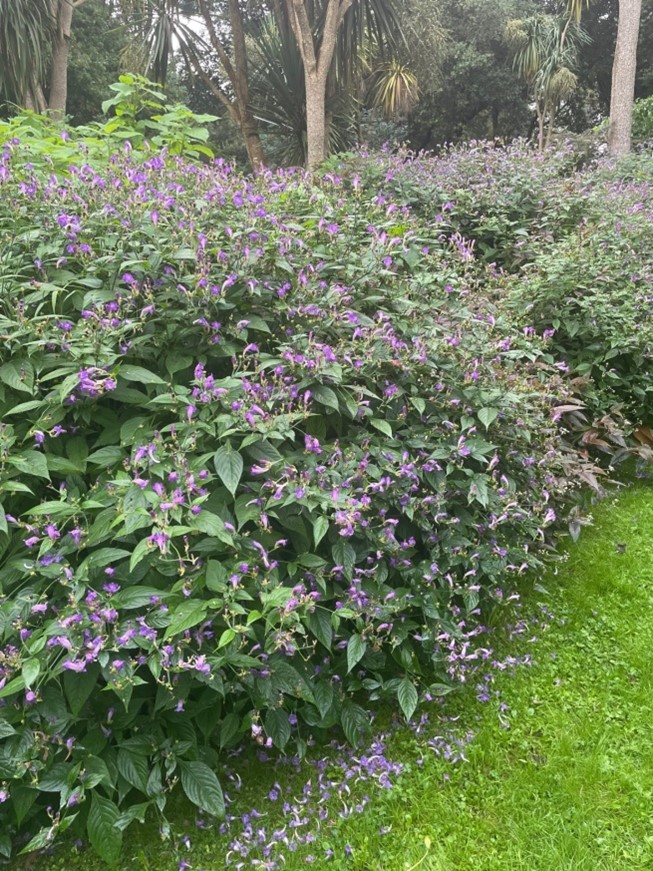September Newsletter
Clerodendron bungei is to be found in several
spots in the garden. It can be quite aggressive
and has a scent that is divisive, some say the
flowers are sweet, others that the leaves are
nauseous. Introduced by Robert Fortune in
1844 as a greenhouse plant.
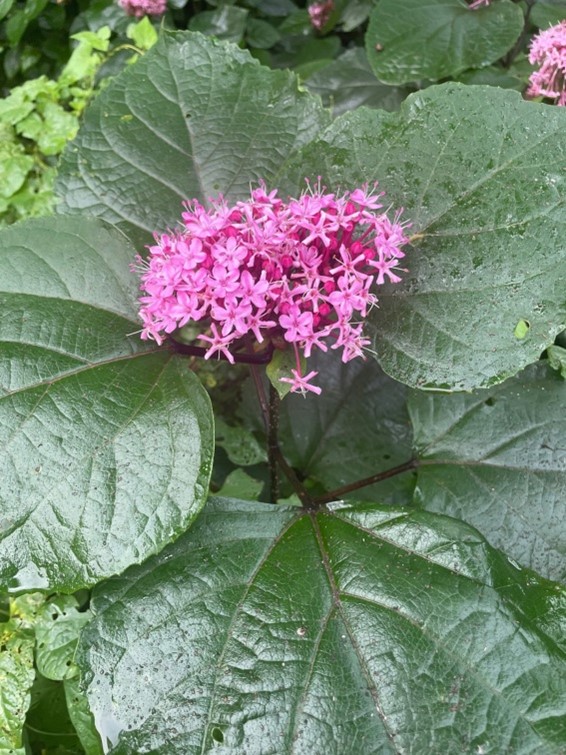
Amaryllis belladonna on the South African
Terraces flowers without any leaves present,
leading to its common name of Naked Ladies.
These bulbs thrive in heat.
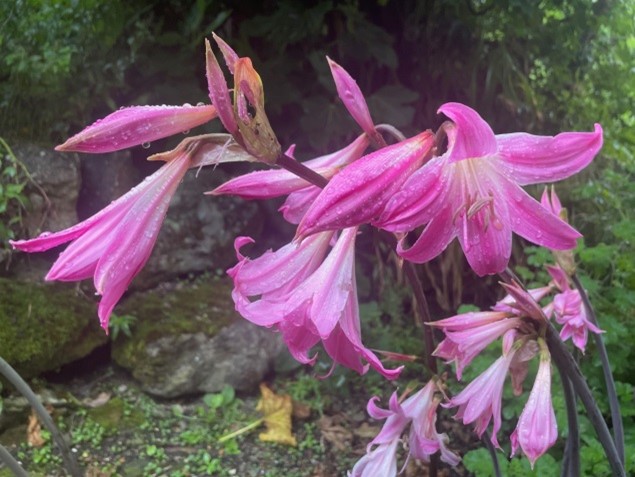
Alstroemeria “Indian Summer” has a very
appropriate name but has actually been in
bloom for a long time at VBG. In the Mixed
Border it has been a popular perennial since
we acquired it in 2016. It has every colour of
the hot end of the fiery colour spectrum.
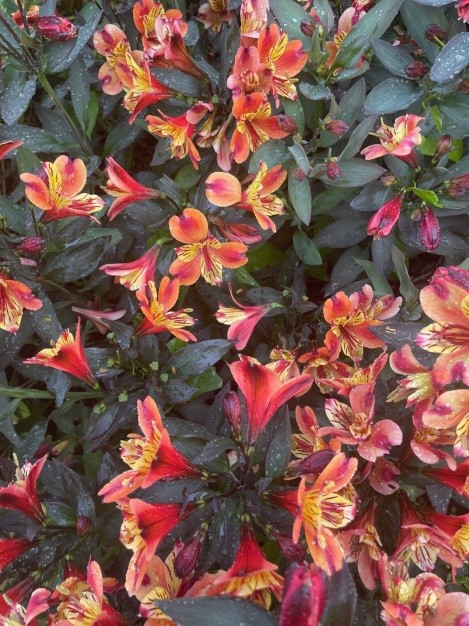
Buddleja colvilei “Kewensis” is a large
flowered Buddleja that once grew in the
Temperate House at Kew. At VBG it grows
outside and used to grow where our
Australian collection is now, but this specimen
was donated by Phil le May in 2012. See it
against the Café wall in the Medicinal Garden.
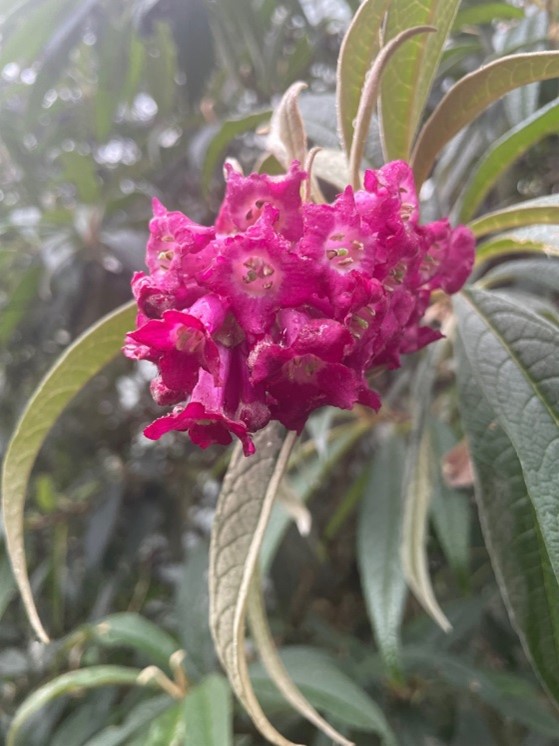
Campsis radicans forma flava amongst other
Campsis on our Campsis Arch. It has been
cultivated in the UK since 1640 but always on
warm walls, it is unusual to see these free
standing or, as they are here, over an
archway.
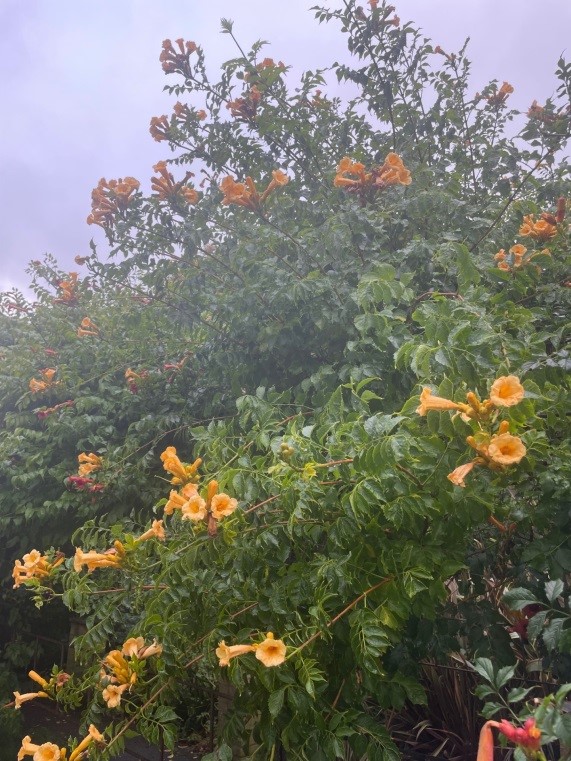
Clematis “Cote D’Azur” is rather unusual, an herbaceous non-climbing Clematis. At the west end of the Mixed Border it is easily missed and only reveals its true identity upon examining the flowers.
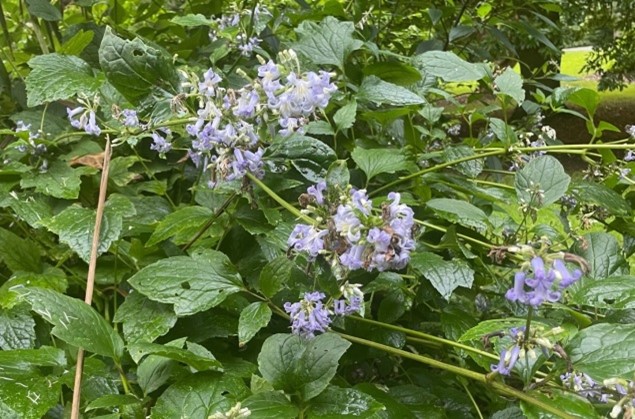
Here is Strobilanthes attenuata commanding the side of the Walled Garden. Covered in bees, the
bumble bees have mastered circumventing the corolla tube to feed on nectar, they slide their
tongues into the gap between the tube and calyx. This cheats the plant of pollination which would
normally be by insects with long proboscis.
